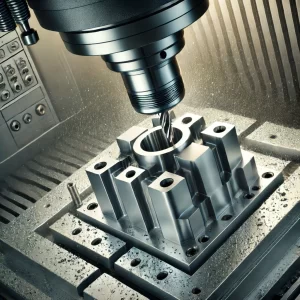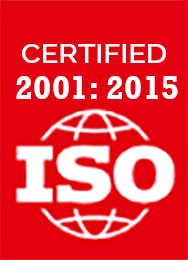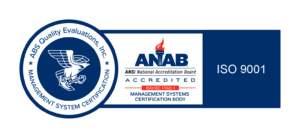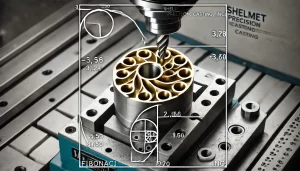The process of machining investment castings adds value by refining the metal cast part, ensuring tighter tolerances, improving surface finishes, and achieving specific geometries that may be challenging to achieve solely through casting.
Shelmet
PO Box 95
550 County Highway GH
Wild Rose, WI 54984
Mon - Fri 7.00 - 4.00 CST OPEN

Optimized Performance
Machining investment castings enhances dimensional accuracy and surface integrity, especially required for complex geometries and tight tolerances. By leveraging advanced CNC machining techniques, this process ensures consistent performance, superior fit, and seamless integration of components.
The precision achieved through machining minimizes the need for assembly adjustments, leading to reduced downtime and increased operational efficiency, providing significant value to the customer.
Machining Process Specific Use Benefits
- Dimensional Accuracy: Achieves tight tolerances and precise dimensions, crucial for high-performance applications.
- Surface Finish: Provides superior surface quality, enhancing both functionality and aesthetics.
- Versatility: Suitable for a wide range of materials and complex geometries.
- Customization: Allows for specific modifications and adjustments to meet unique project requirements.
Shelmet provides a seamless transition from design to final product with exacting precision. Our focus on technical accuracy ensures compliance with ISO 9001:2015 standards. Shelmet emphasizes quality into every stage of your investment casting project.
Machining Investment Castings
Precision Investment Casting
Get specific casting process answers at no charge from a Shelmet metal casting expert Help Line.
920-622-3344
Precision Machining of Investment Castings
Machining of investment castings encompasses a range of precision operations aimed at achieving specified tolerances and superior surface finishes. Techniques such as CNC milling, turning, and grinding are employed to refine cast components, allowing for the creation of complex geometries and adherence to stringent specifications.
This secondary process is necessary for parts where casting alone cannot achieve the required dimensional accuracy or surface integrity, ensuring compliance with high-quality standards required in various industrial applications.
Machining involves several key steps:
- Setup and Fixturing: The casting is securely mounted on a machine tool using specialized fixtures to ensure stability during the machining investment process.
- Material Removal: Cutting tools, such as end mills and drills are used to remove material from the casting. This is done through processes like milling, turning, drilling, and grinding.
- Precision Finishing: Secondary operations such as honing, polishing, and deburring are performed to achieve the required surface finish and dimensional accuracy.
- Inspection and Quality Control: The machined parts undergo rigorous inspection to ensure they meet the specified tolerances and surface quality standards.
Machining Investment Casting is versatile and can be applied to a wide range of materials, including:
- Stainless Steel: Known for corrosion resistance, often used in medical and food processing industries.
- Aluminum: Lightweight and easy to machine, ideal for consumer electronics.
- Brass and Bronzes: Excellent for electrical components due to their conductivity.
Machining investment castings is widely used in industries such as:
- Medical: Surgical instruments, orthopedic implants, and dental tools.
- Industrial Equipment: Pumps, valves, and precision machinery components.
- Consumer Electronics: Housings, connectors, and intricate hardware.
Investment castings can undergo various machining investment casting processes to achieve the desired specifications and surface finishes. The most common types of machining include:
- CNC Milling: Uses computer-controlled rotating cutting tools to remove material from the casting, ideal for creating complex shapes and tight tolerances.
- Turning: Rotates the casting on a lathe while a cutting tool removes material, commonly used for cylindrical parts and features.
- Drilling: Employs a rotating drill bit to create precise holes in the casting for components requiring accurate bore diameters.
- Grinding: Utilizes abrasive wheels to finish surfaces and achieve high precision and smoothness, often used for final surface finishing.
- Honing: Uses abrasive stones to refine the interior surfaces of holes, improving dimensional accuracy and surface quality.
- Threading: Creates precise internal or external threads on the casting using tools such as taps, dies or CNC threading machines. Components that require threaded connections for assembly, ensure a secure fit and proper alignment in applications where parts are joined together.
- Electrical Discharge Machining (EDM): Uses electrical discharges to erode material, suitable for hard materials and intricate shapes that are difficult to machine with traditional methods.
- Broaching: Employs a toothed tool to remove material in a linear motion, ideal for creating keyways, splines, and other complex profiles.
- Polishing and Deburring: Enhances the surface finish and removes residual burrs from the casting creating smooth edges and surfaces.
These machining investment casting processes allow Shelmet investment castings to meet precise dimensional and surface requirements, making them suitable for a wide range of industrial applications.
Consistent Quality: Precision machining ensures uniformity across multiple parts, maintaining high-quality standards and reducing variability in production.
Material Efficiency: Optimized machining processes reduce waste and enhance the utilization of casting materials.
Improved Assembly Fit: Machined castings offer better fit and alignment in assemblies, reducing the need for adjustments and improving overall system performance.
Reduced Lead Times: Advanced machining techniques can streamline production workflows, resulting in faster turnaround times for complex parts.
Complex Geometry Capabilities: Enables the production of intricate designs and features that are difficult to achieve through casting alone.
Post-Processing Compatibility: Machined parts are well-suited for subsequent treatments such as heat treatment, coating, or plating, enhancing their performance characteristics.
How do I know when to use machining for my investment castings?
Questions? Call Shelmet customer service.
(920) 622-3344 Call Today!
We offer free consultations to help determine when machining is the best option for your project. Our experts will assess your requirements, desired tolerances, and surface finishes to provide optimal recommendations. This service often results in significant time and cost savings for our customers.
Machining Resources
Machinery’s Handbook: An authoritative reference book on machining and manufacturing processes.
Ask Your Shelmet Metal Casting Expert How Machining Can Benefit You
Determining the need for machining investment castings depends on the specific requirements of your project. For instance, machining can enhance dimensional accuracy, surface finish, and the ability to meet tight tolerances in specific applications.
Different machining techniques, such as CNC milling, turning, and grinding, each bring their own advantages. Your Shelmet metal casting expert can guide you in selecting the right machining processes to achieve the desired benefits for your project, ensuring optimal performance and quality.
01. What is machining in the context of investment casting?
Machining is the process of precisely removing material from cast parts to achieve the desired dimensions and surface finish.
02. Why is machining sometimes used for investment castings?
Machining is used for investment castings when parts require tight tolerances and high-quality standards that cannot be achieved through casting alone. It enhances dimensional accuracy and surface integrity, making it ideal for applications requiring precise fits and superior finishes.
03. What materials can be machined after casting?
Common materials that can be machined after casting include stainless steel, aluminum, brass, copper, and bronze. These materials are frequently selected due to their machinability and the high-quality results they provide.
Additionally, materials such as carbon steel, nickel alloys, and cobalt alloys are also often used in investment casting and can be effectively machined to achieve the desired specifications and finishes.
04. What secondary operations are involved in machining?
Secondary operations may include honing, polishing, and deburring to achieve the required finish.
05. What common parts are machined investment castings by industry?
Machined investment castings are utilized across a wide range of industries due to their precision and high-quality finishes:
- Medical: Used in surgical instruments, orthopedic implants, and dental tools where precision and bio-compatibility are essential.
- Industrial Equipment: Employed in pumps, valves, and precision machinery components that require durability and exact specifications.
- Consumer Electronics: Applied in housings, connectors, and intricate hardware, where both aesthetics and precise fit are important.
- Automotive: Utilized in engine components, transmission parts, and custom performance parts that demand high strength and exacting tolerances.
- Oil and Gas: Used in drilling equipment, pipeline components, and valves, where parts must withstand extreme conditions and rigorous use.
- Marine: Applied in propellers, pumps, and structural components, requiring resistance to corrosion and reliable performance.
- Power Generation: Employed in turbines, heat exchangers, and structural supports, where high strength and precision are critical for efficiency and safety.
- Electronics: Used in semiconductor manufacturing equipment and precision electronic components, where high accuracy and fine finishes are necessary.
- Food Processing: Applied in sanitary fittings, valves, and equipment parts, requiring easy cleaning and resistance to contamination.
- Renewable Energy: Utilized in wind turbine components, solar panel mounts, and hydroelectric equipment, demanding high durability and precise engineering.
These industries benefit from the superior dimensional accuracy, surface integrity, and material properties that machined investment castings provide, ensuring reliable performance in demanding applications.
“We Do What We Say We Will Do.”
Customers know what to expect from Shelmet at the onset of the investment casting project and on through to delivery.




